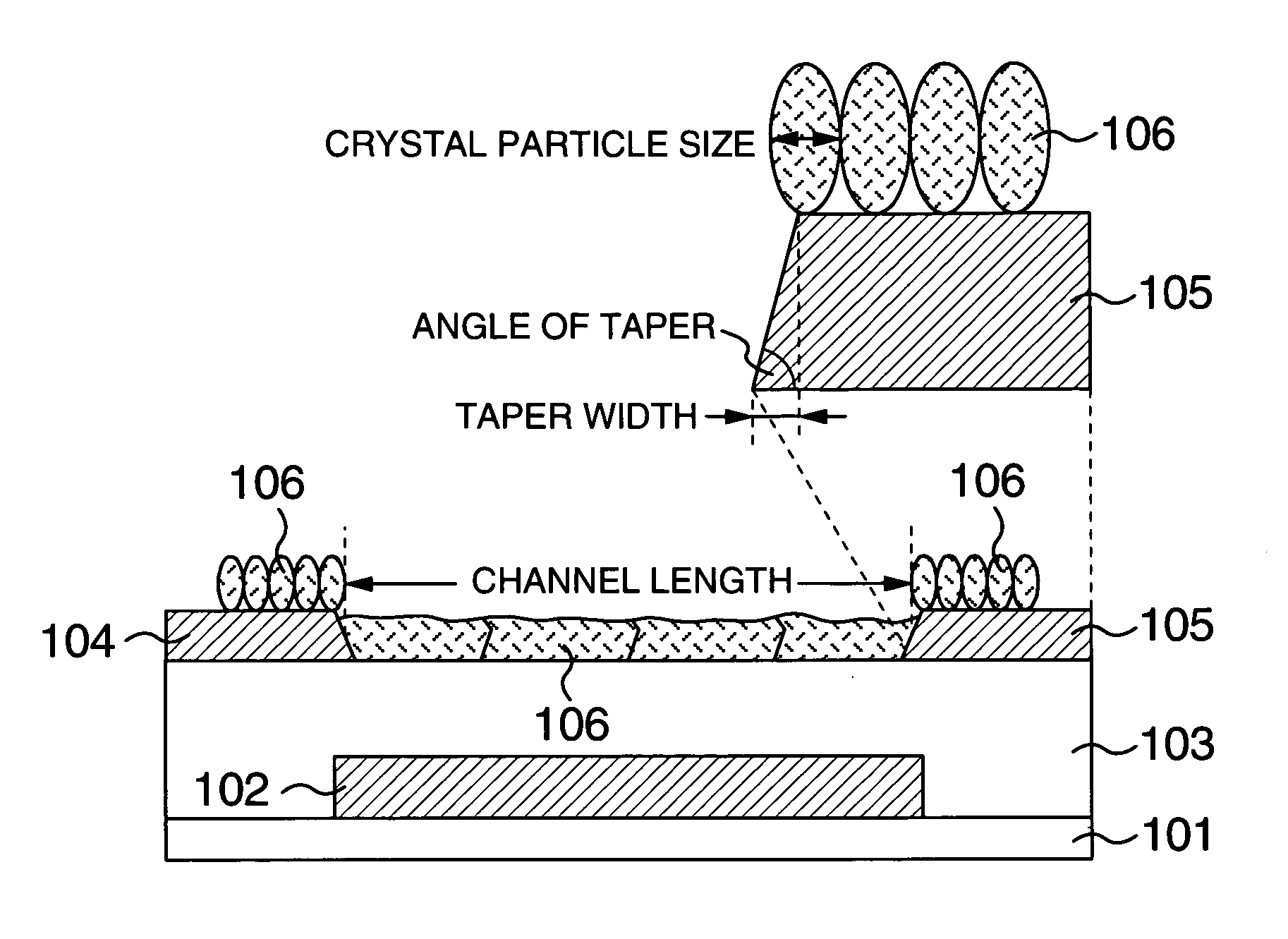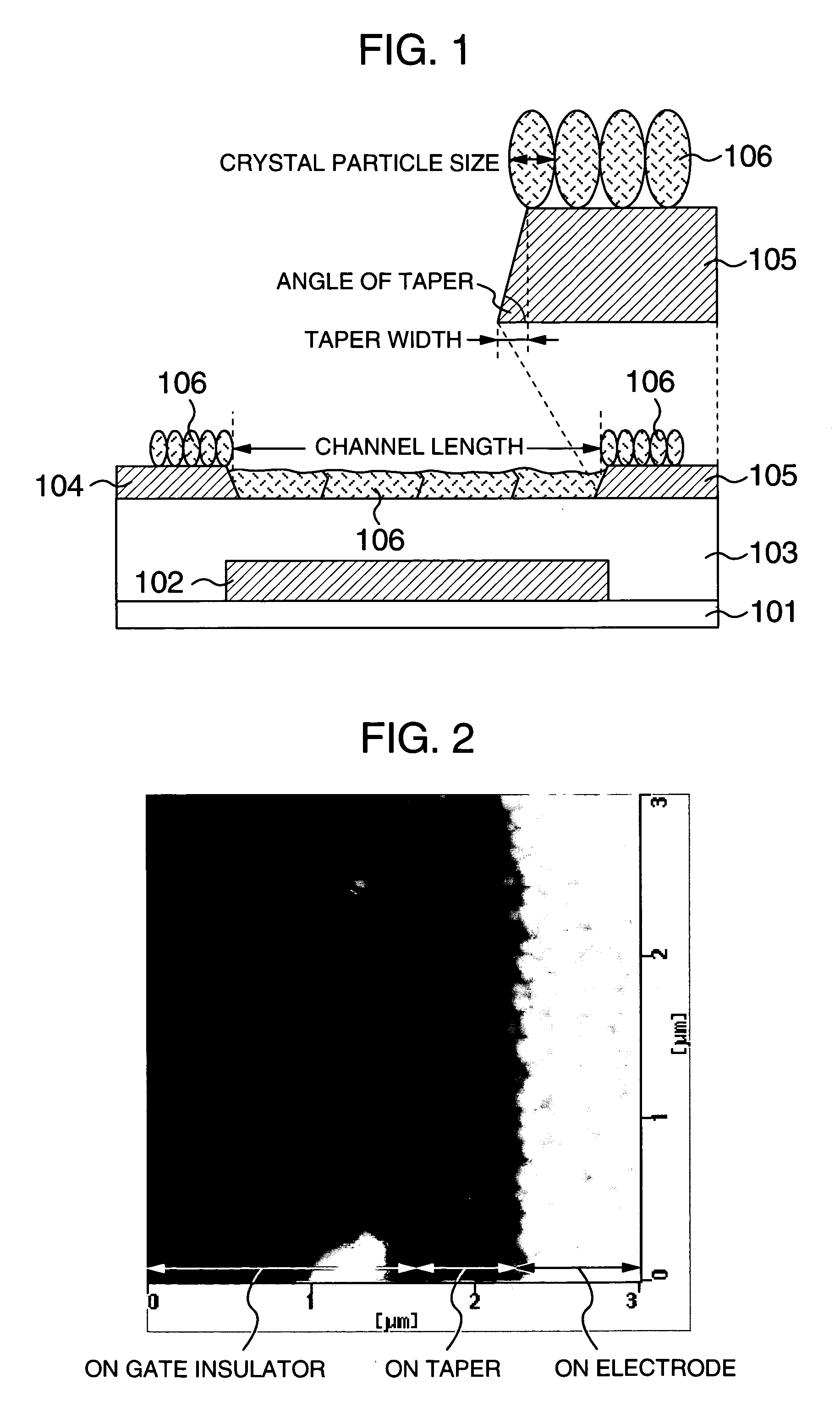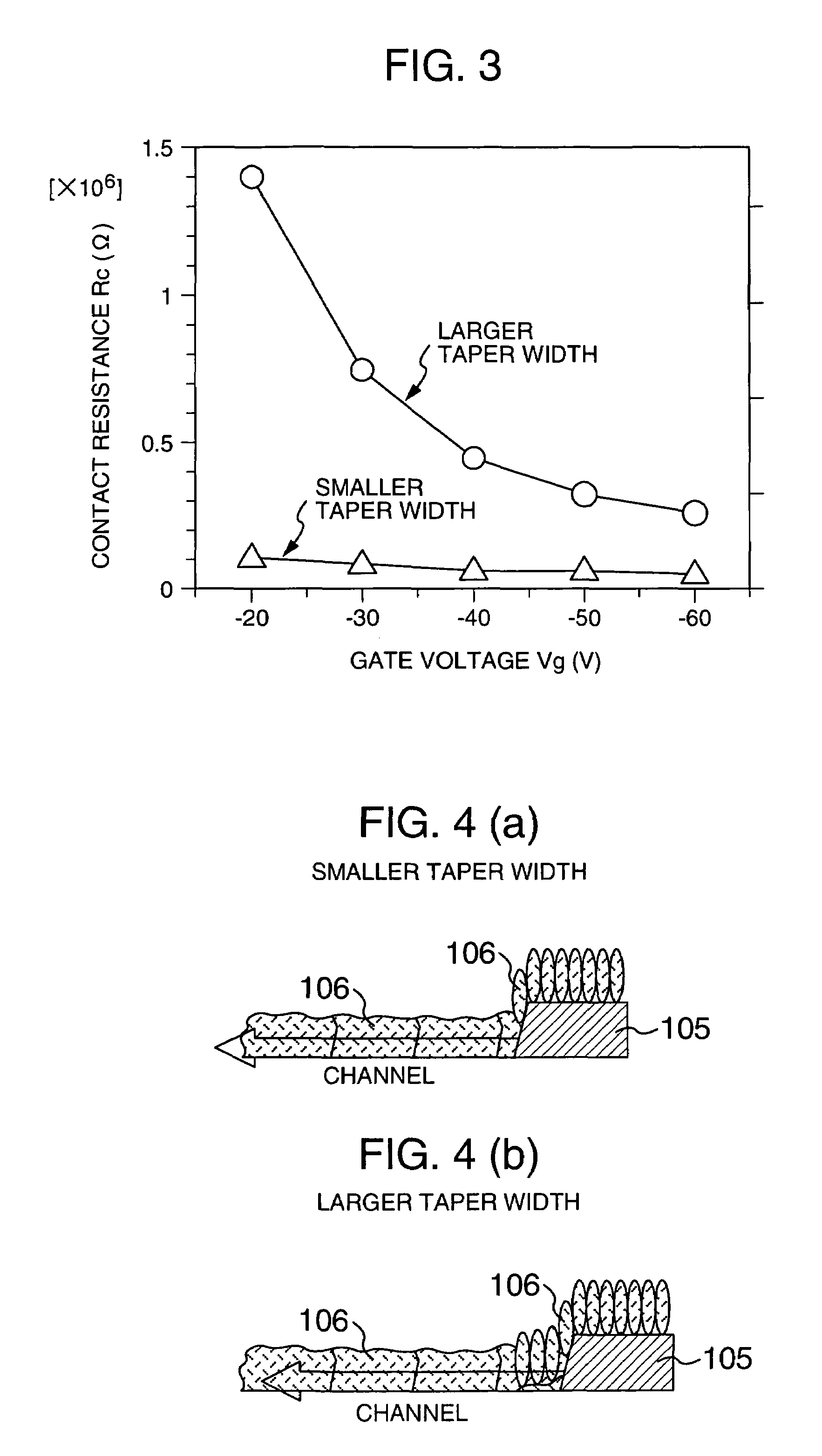Semiconductor device and manufacturing method thereof
a technology of silicon semiconductor and thin film, which is applied in the direction of transistors, basic electric elements, thermoelectric devices, etc., can solve the problems of sputtering apparatus, low throughput, and high cost of silicon semiconductor production using such a technology, and achieve the effect of reducing contact resistance, increasing electric current of organic tft of bottom contact type, and low cos
- Summary
- Abstract
- Description
- Claims
- Application Information
AI Technical Summary
Benefits of technology
Problems solved by technology
Method used
Image
Examples
example 1
[0027]A first example of the present invention is explained below with reference to FIGS. 1 to 4. FIG. 1 is a schematic cross-sectional view of a bottom contact type organic TFT obtained according to the present invention. A glass substrate was used as an insulating substrate 101, and a chromium film of 100 nm in thickness was formed on the glass substrate by sputtering. Then, a gate electrode 102 was formed by photolithography. A material for the insulating substrate 101 may be selected from various materials so long as it is an insulating material. Specifically, there may be used, for example, inorganic materials such as glass, quartz, alumina sintered product, etc.; insulating plastics such as a polyimide film, polyester film, polyethylene film, polyphenylene sulfide film, poly(p-xylene) film, etc; and hybrid substrates obtained by combining any of these inorganic materials and any of these insulating plastics. As the gate electrode 102, there may be used metals such as tantalum,...
example 2
[0031]A second example of the present invention is explained below with reference to FIG. 5 and FIG. 6. FIG. 5 is a schematic cross-sectional view of a second example of the semiconductor device of the present invention. A glass substrate was used as an insulating substrate 101, and a chromium film of 100 nm in thickness was formed on the glass substrate by sputtering. Then, a gate electrode 102 was formed by photolithography. As in the first example, a material for the insulating substrate 101 may be selected from various materials so long as it is an insulating material. As the gate electrode 102, other metals, alloys obtained by using these metals, electroconductive polymers and the like may be used as in the first example. As a method for forming the gate electrode 102, any of ink jet, a printing method, and photolithography may be employed. Next, a SiO2 film of 300 nm in thickness was formed by CVD to form a gate insulator 103. The gate insulator 103 may also be formed in the s...
example 3
[0032]A third example of the present invention is explained below with reference to FIGS. 7 to 10. FIG. 7 is a schematic cross-sectional view of a third example of the semiconductor device of the present invention. A glass substrate was used as an insulating substrate 101, and a chromium film of 100 nm in thickness was formed on the glass substrate by sputtering. Then, a gate electrode 102 was formed by photolithography. As in the first embodiment, a material for the insulating substrate 101 may be selected from various materials so long as it is an insulating material. As the gate electrode 102, other metals, alloys obtained by using these metals, electroconductive polymers and the like may be used as in the first embodiment. As a method for forming the gate electrode 102, any of ink jet, a printing method, and photolithography may be employed. Next, a SiN film of 300 nm in thickness was formed by CVD to form a gate insulator 103. The gate insulator 103 may also be formed in the sa...
PUM
| Property | Measurement | Unit |
|---|---|---|
| length | aaaaa | aaaaa |
| angle | aaaaa | aaaaa |
| height | aaaaa | aaaaa |
Abstract
Description
Claims
Application Information
 Login to View More
Login to View More - R&D
- Intellectual Property
- Life Sciences
- Materials
- Tech Scout
- Unparalleled Data Quality
- Higher Quality Content
- 60% Fewer Hallucinations
Browse by: Latest US Patents, China's latest patents, Technical Efficacy Thesaurus, Application Domain, Technology Topic, Popular Technical Reports.
© 2025 PatSnap. All rights reserved.Legal|Privacy policy|Modern Slavery Act Transparency Statement|Sitemap|About US| Contact US: help@patsnap.com



